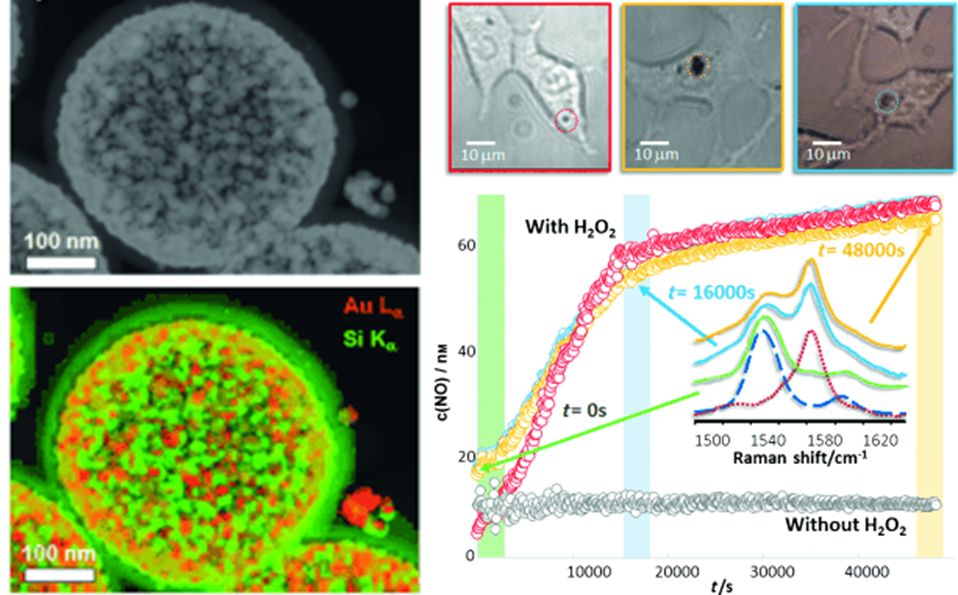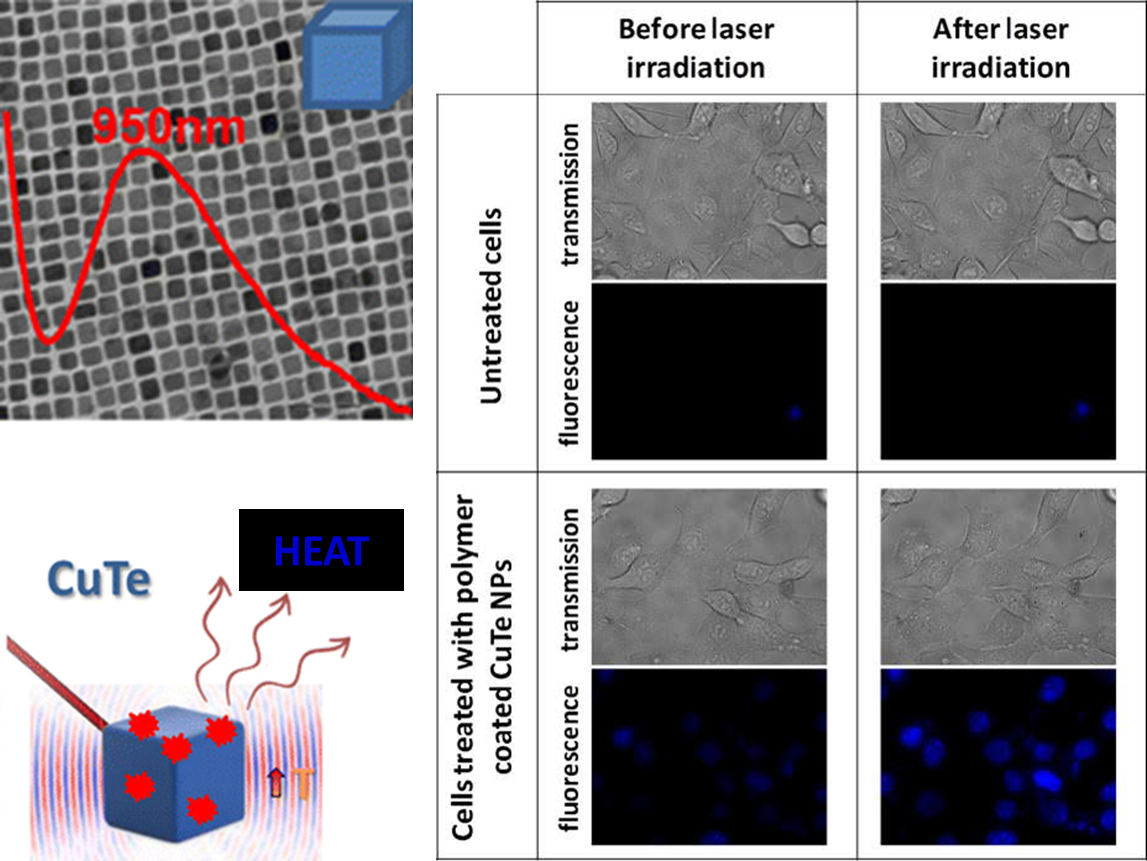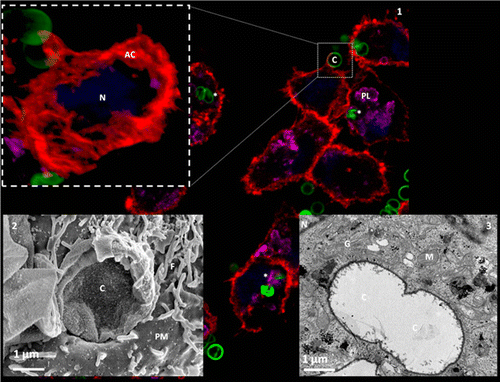Research
We convert basic research findings on nanobiotechnology into new approaches addressing biomedical challenges. We fabricate multifunctional biomaterials by integrating selected building-blocks into one single system depending on the application's requirements and considering the biophysicochemical properties of the nanomaterial. We target independently two areas: diagnostics and therapeutics of diseases but also simultaneously by creating a theranostic tool towards a more personalized medicinal approach of diseases. We focus on understanding and engineering the nanomaterial-biological system interface. We use state of the art material and biological/molecular characterization methods to find predictive patterns of cellular outcomes after exposure to nanomaterials for translational medicine.
RESEARCH LINES
Engineering nanomaterials for diagnosis/sensing
We fabricate optical biosensors based on plasmonic hollow nanocapsules functionalized with sensing molecules and having a surface-enhanced Raman scattering read out. These sensors provide multiplex, unequivocal, ultra-sensitive level analysis.

Engineering nanomaterials for controlled release
We use electromagnetic nanoantennas to trigger the opening of and release from individual nanocarriers on demand.

Exploring the therapeutic value of novel nanomaterials
We use therapeutically active nanomaterials to explore their biomedical uses (i) in chemo-hyperthermia to overcome current chemo-resistance by combining physical and chemical approaches; (ii) as anti-oxidant due to ROS scavenging activities.

Engineering the nanomaterial-biological interface
The biological environment critically affects the multiple functionalities of the nanomaterials. This have an impact on the materials, toxicity, internalization, biodistribution, etc. Thus, finally governing functionality. Correlating cellular responses to the physicochemical properties of nanomaterials helps to predict cell behavior towards a more rational design of biomedical materials depending on the requirements of each application.

